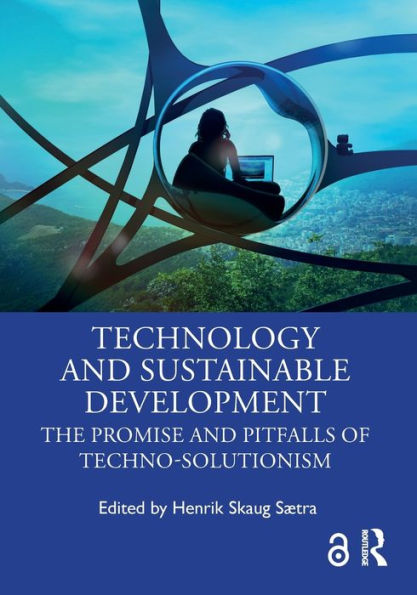/revolutions, wars, and general development are regularly connected to some sort of
/technological change. However, not all development is beneficial. While technology has
/fueled great innovations and rapid development, the notion of sustainable development
/has gained prominence as we now experience serious social, economic, and environmental
/challenges.
This book examines whether technology can be used to fix the very problems caused by
/technology, as the various chapters examine different aspects related to how technology
/has brought us where we are today (which some will say is the best place humanity’s been at
/according to a range of metrics), and whether technology helps or hinders us in our efforts
to solve the challenges we currently face. The issues discussed cover the three sustainability
/dimensions and include topics such as the materiality of AI, technology in education, AI
for gender equality, innovation and the digital divide, and how technology relates to power,
the political system, and capitalism. The chapters all build on the theoretical backdrop of
/technological change, sustainable development, and the UN’s Sustainable Development
/Goals are actively used throughout this book, both to examine how these goals capture or
overlook central elements of sustainable development, and also to facilitate and create a
common framework of engagement between the chapters.
This book provides a novel combination of traditional theories that are explored
through different case studies, providing the ground for a better understanding of how
and when technology can – and cannot – be the enabler of sustainable development.
It is thus an important resource for students of all disciplines, technologists, and those
/developing and applying new technologies. It is also a valuable resource for politicians
and regulators attempting to harness the power of technology for good, while limiting its
/negative potential.
The Open Access version of this book, available at www.taylorfrancis.com, has been
/made available under a Creative Commons [Attribution-Non Commercial-No Derivatives
/(CC-BY-NC-ND)] 4.0 license. Funded by Østfold University College.
/revolutions, wars, and general development are regularly connected to some sort of
/technological change. However, not all development is beneficial. While technology has
/fueled great innovations and rapid development, the notion of sustainable development
/has gained prominence as we now experience serious social, economic, and environmental
/challenges.
This book examines whether technology can be used to fix the very problems caused by
/technology, as the various chapters examine different aspects related to how technology
/has brought us where we are today (which some will say is the best place humanity’s been at
/according to a range of metrics), and whether technology helps or hinders us in our efforts
to solve the challenges we currently face. The issues discussed cover the three sustainability
/dimensions and include topics such as the materiality of AI, technology in education, AI
for gender equality, innovation and the digital divide, and how technology relates to power,
the political system, and capitalism. The chapters all build on the theoretical backdrop of
/technological change, sustainable development, and the UN’s Sustainable Development
/Goals are actively used throughout this book, both to examine how these goals capture or
overlook central elements of sustainable development, and also to facilitate and create a
common framework of engagement between the chapters.
This book provides a novel combination of traditional theories that are explored
through different case studies, providing the ground for a better understanding of how
and when technology can – and cannot – be the enabler of sustainable development.
It is thus an important resource for students of all disciplines, technologists, and those
/developing and applying new technologies. It is also a valuable resource for politicians
and regulators attempting to harness the power of technology for good, while limiting its
/negative potential.
The Open Access version of this book, available at www.taylorfrancis.com, has been
/made available under a Creative Commons [Attribution-Non Commercial-No Derivatives
/(CC-BY-NC-ND)] 4.0 license. Funded by Østfold University College.

Technology and Sustainable Development: The Promise and Pitfalls of Techno-Solutionism
286
Technology and Sustainable Development: The Promise and Pitfalls of Techno-Solutionism
286
